St John's Cemetery Parramatta
St John's Cemetery in Parramatta is Australia's oldest European burial ground. It opened in 1790, in the earliest years of the British penal colony.
It's home to Australia's oldest European grave. Henry Dodd, assistant to Captain Arthur Phillip, arrived on the First Fleet in 1788. Dodd gets mentioned in the history of the penal colony, not only as Phillip's assistant, but because he established one of the first successful farms in the new colony before he died in 1791. That farm was close by his grave in Parramatta. His successful crop was one of a number of farming successes in the area that shifted the focus of the colony from Sydney cove, to what is now known as Parramatta. It was known as Rosehill back then.
Dodd's grave remains in place, with no real fanfare or recognition. It'll probably take you a while to find it.
In addition to Dodd's grave, St John's is the resting place for more than 50 First Fleeters - those who arrived in Australia aboard the First Fleet of 1788. Reverend Samuel Marsden, aka. The Flogging Parson, D'Arcy Wentworth - father or William Charles Wentworth, and many more big players in the early years of the British colony are buried here. As you'll see, when you visit Parramatta cares not for such things.

Photo: Mark Bowyer Grave of Darcy Wentworth - father of WC Wenrtworth - St John's Cemetery, Parramatta

Photo: Mark Bowyer Samuel Marsden's grave - St John's Cemetery, Parramatta

Photo: Mark Bowyer St John's Cemetery, Parramatta
The neglect of St John's Cemetery as a historical site is one of the strangest cases of disregard for colonial heritage we know in Australia. This is an important place of Australian history that lies totally unloved.
We assume the location in Parramatta is the main reason for the neglect.
Parramatta has been a working class district for most of the past century. Things without a connection to property development or the local rugby league team have struggled for oxygen. I come from the area and have been watching this scandal unfold for decades.
The Female Factory and Willow Grove are the latest in a long line of heritage scandals that don't manage to raise concern among Sydneysiders. You'll get a clear sense of the problem when you check out St John's Cemetery. If you make the journey to Parramatta and St John's, be sure to visit Old Government House, Elizabeth Farm and the old Female Factory as well.
Camperdown Cemetery, Newtown
Newtown's 1848 Camperdown Cemetery is the most atmospheric cemetery near the centre of Sydney. For a time this was Sydney's most important cemetery.
Newtown is Sydney's rapidly gentrifying bohemian centre so this area is worth visiting for shopping, eating and nightlife. Pop by Camperdown Cemetery while you're in the area. It's a beautiful place and it's right next to a popular local park - once part of the cemetery.
If history's your thing, you'll find the grave of colonial explorer and former Surveyor General Thomas Mitchell interesting.

Photo: Mark Bowyer Camperdown Cemetery, Newtown

Photo: Mark Bowyer The grave of Thomas Mitchell - Camperdown Cemetery, Newtown

Photo: Mark Bowyer The 1848 Moreton Bay Fig - Camperdown Cemetery, Newtown
Mitchell, who died in 1855, finds himself embroiled in a very current scandal. Bruce Pascoe, author of the best selling book Dark Emu is accused of a highly selective reading of Mitchell's records in building his now discredited account of Indigenous agriculture. Pascoe has long been ridiculed from the culture warrior right. A handful of academics have also analysed and debunked his claims over many years. But he was embraced by some academic institutions and many progressives.
It's always seemed like a strange debate. Indigenous societies never needed to conform to Western ideas of agricultural complexity to establish their value and accomplishment. And the debunking of the Pascoe narrative in no way changes the known understanding of Indigenous sovereignty, the British colonial invasion and the dispossession of Indigenous people.
The mass grave from the 1857 wreck of The Dunbar, is a tragic piece of Sydney history located in the cemetery. After 81 days sailing from England, The Dunbar crashed onto rocks in a storm off Sydney Heads. Bodies washed up on harbour beaches for days after. There was only one survivor. It remains the city's worst maritime disaster and
Camperdown Cemetery's best asset is its wild beauty, the birds, the trees and the atmosphere. It has the perfect old cemetery vibe. The 1848 Moreton Bay fig and the caretaker's residence set the scene when you arrive.
St Stephen's is still an operating Anglican church in the grounds that was built after the cemetery was established. Cemeteries like this are common in the UK and Europe, but I don't know too many like it in Sydney.
Waverley Cemetery, Bronte
If a cemetery's worth is calculated on the value of its real estate, Waverley Cemetery in Sydney's eastern suburbs would be one of the most valuable on earth. At current Sydney land prices, those buried in Waverley Cemetery may hold a more valuable land asset in death than many Sydney residents in life. You can be sure that many a Sydney property developer - they wield inordinate power in the city - has gotten excited just thinking of the development potential.
Waverley Cemetery sits on hilly cliffs looking across the Pacific Ocean and the Sydney coastline to Bronte. The views are breathtaking. If only the occupants could take advantage of them. This is prime of prime Sydney real estate.

Photo: Mark Bowyer Waverley Cemetery, Sydney

Photo: Mark Bowyer Waverley Cemetery, Sydney

Photo: Mark Bowyer Waverley Cemetery, Sydney
The cemetery opened in 1877. Sydney's population growth and the growth of new districts created demand for a new cemetery in the British colony. The end of convict transportation in 1840 saw a shift in focus to economic development and the population swelled.
There are a quite a few well-known Australian figures buried here. As I wandered the place, I also noted the unknown but significant players in colonial life - judges, governors, high-ranking military types and others.
It looks like Sydney's eastern harbour suburbs had secured their place as the home of the city's elite by the mid to late 1800s. The harbour provided good access to the city.
Author and poet Henry Lawson is the best known figure buried at Waverley Cemetery. Lawson is among Australia's most famous writers. He was a notorious radical, nationalist and drunk. He did multiple stints in prison and never conquered his alcohol problem. He was given the first State funeral in New South Wales, indicating he somehow transcended a tragic life in death. His presence among the colonial elite in Waverley cemetery is a wonderful twist.
Australia's first Prime Minister, after Federation in 1901, Edmund Barton, is also buried here.
Colonial history buffs will be interested to know that Lieutenant-Colonel George Johnston is buried here too. Johnston did the dirty work for the conspirators in the Rum Rebellion of 1808, arresting Governor Bligh in Government House. Johnston became the senior figure in the colony until the arrival of Governor Macquarie in 1811. He only paid a small price for overthrowing the government and went on to own a large estate where modern day Annandale is located. Johnston Street carries his name.
This was Australia's first and only successful military coup. Political corruption has been a persistent feature of life in New South Wales ever since.
There are hundreds of military graves from twentieth century wars in Waverley Cemetery.
Waverley Cemetery's setting has made it a popular location for film and television productions. It's part of the coastal walk that runs from Bondi to Coogee and so you can include the cemetery in a stunning longer coastal walk.
This page is still in development. More cemeteries will be added soon.

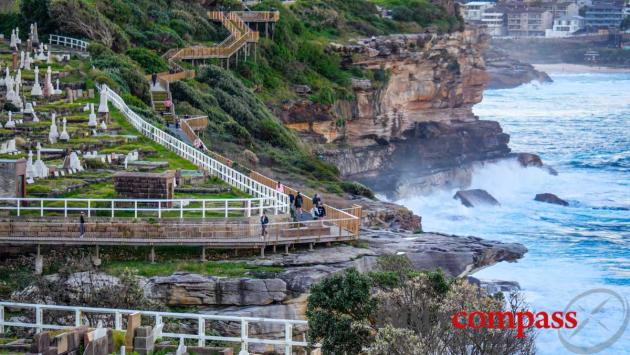
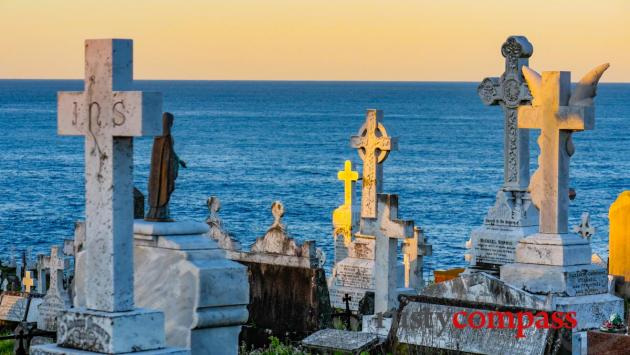
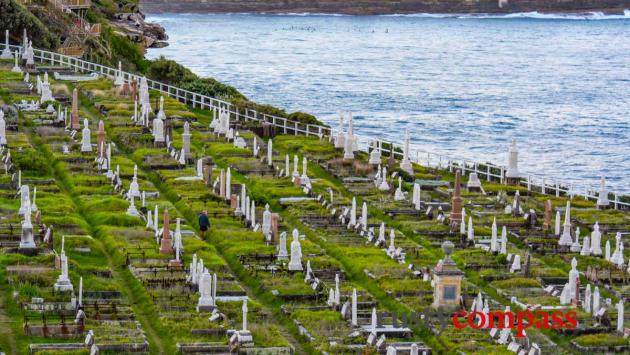
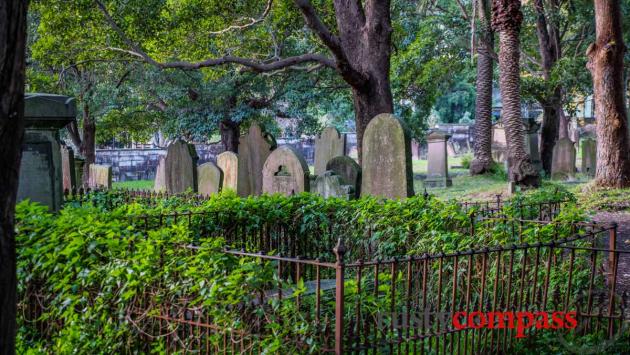
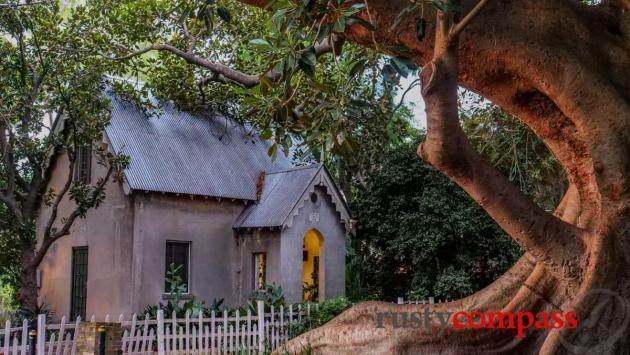
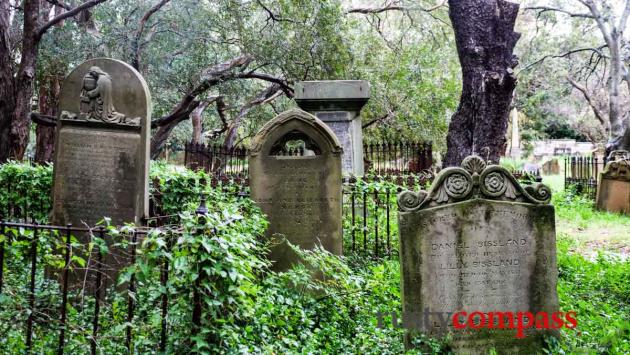
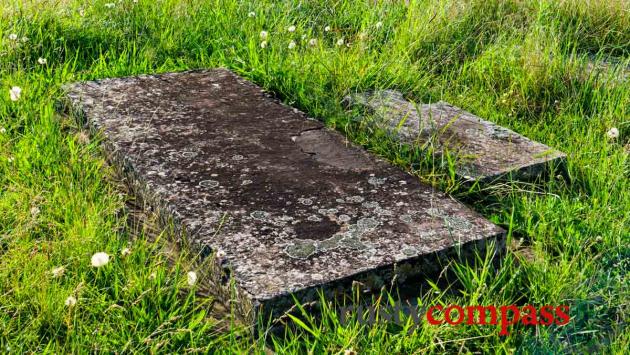
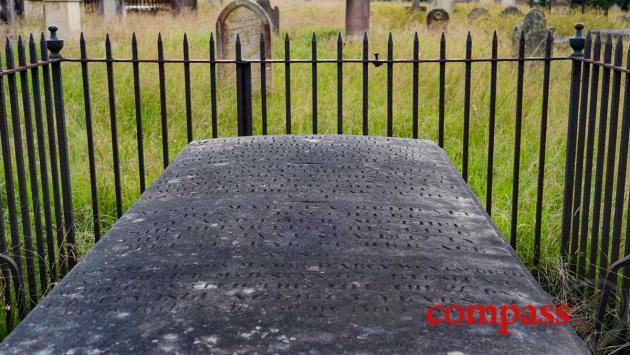
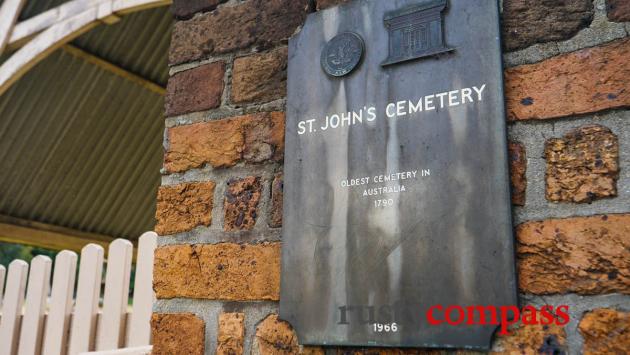





There are no comments yet.